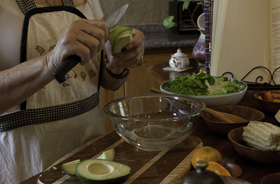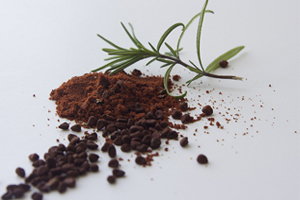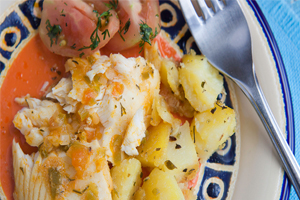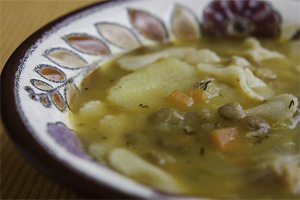Let’s face it. At age 7, the only good thing about coleslaw was the creamy dressing and essentially that is how I ate cabbage when I was a kid. In adulthood, I still enjoyed coleslaw, but lately I’ve been trying to find a recipe that is tasty without the calories. And I found it! I’ve made my own modifications –as I usually do. Here, I share it with you.
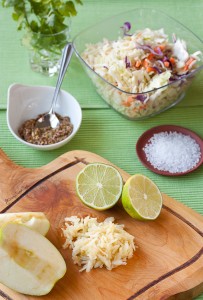 You will need a white or red cabbage or a combination of both (whatever your preference) shredded. I’m not very fast at cutting vegetables, so I cheat and buy the coleslaw shredded cabbage at the supermarket. Have some olive oil, juice from one lemon, about a tablespoon of Dijon mustard, half of a green apple peeled and grated, about a tablespoon of white wine vinegar, some salt to season and chopped cilantro.
You will need a white or red cabbage or a combination of both (whatever your preference) shredded. I’m not very fast at cutting vegetables, so I cheat and buy the coleslaw shredded cabbage at the supermarket. Have some olive oil, juice from one lemon, about a tablespoon of Dijon mustard, half of a green apple peeled and grated, about a tablespoon of white wine vinegar, some salt to season and chopped cilantro.
 Combine the olive oil, white wine vinegar, Dijon mustard and lemon juice. Add this to the grated apple and mix well. Add the shredded cabbage and mix everything together. Season to taste. Make sure the dressing is to your liking. Add more vinegar, oil, mustard depending on your preference. To finish the salad, sprinkle some chopped cilantro. If you find that cilantro is too strong for your taste, you can use some Italian parsley or regular parsley if it has flavour. In the North, I find parsley to be a bit tasteless, so that is why I prefer using stronger herbs, such as cilantro.
Combine the olive oil, white wine vinegar, Dijon mustard and lemon juice. Add this to the grated apple and mix well. Add the shredded cabbage and mix everything together. Season to taste. Make sure the dressing is to your liking. Add more vinegar, oil, mustard depending on your preference. To finish the salad, sprinkle some chopped cilantro. If you find that cilantro is too strong for your taste, you can use some Italian parsley or regular parsley if it has flavour. In the North, I find parsley to be a bit tasteless, so that is why I prefer using stronger herbs, such as cilantro.
This is a perfect light salad for spring. I like to eat it with fish, for example. In Vancouver we have beautiful wild salmon. Grill it or bake it with some salt, pepper, chilli or cayenne powder to give it a punch and some garlic. I usually add a bit of white wine and lemon juice and cook it just so it’s not raw, but still juicy and delicious.
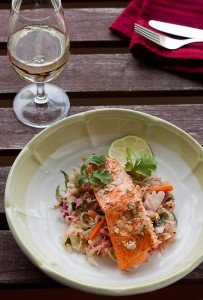 Here is the final dish! I love lemon with my seafood, so a few drops of fresh squeezed lemon juice to the fish and that is just about perfect. A glass of nice chilled white wine goes really well with this. Salud!
Here is the final dish! I love lemon with my seafood, so a few drops of fresh squeezed lemon juice to the fish and that is just about perfect. A glass of nice chilled white wine goes really well with this. Salud!

